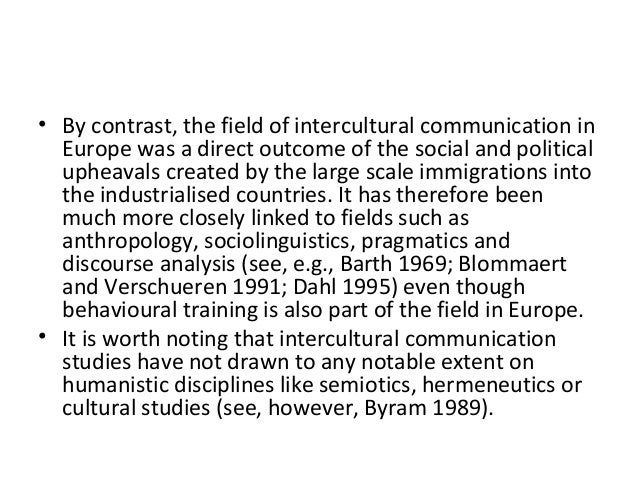

Of particular importance to the lived experiences and perceptions of belonging is the role of public sentiment towards immigrant groups. This said, a fuller understanding of second-generation incorporation requires an analysis that goes beyond an examination of economic conditions to consider the subjective experiences of immigrant identity and belonging, which are equally relevant, although more difficult to measure and define. Indeed, there is little doubt that difficult economic conditions hinder the social and economic incorporation of both migrants and their children, in particular through lower rates of employment and higher costs of living, often leading to increased poverty and segmentation into the lower ends of the job market. The bulk of the literature on second generation measures social inclusion through objective indicators of social mobility like education, employment and intermarriage.
Google intercultural communication in contexts how to#
The complex question of how to best define the second generation is considered, along with an analysis of how particular historical and political contexts colour and shape interest in, and understandings of, immigrant generations. This chapter considers the impact of recessionary conditions on immigrant incorporation and inclusion in Australia, with a special focus on the second generation. Overall, the participants appeared to be peaceful, and their bicultural skills strengthened their Australian citizenship. Against this backdrop I interviewed 14 Muslim youths of diverse backgrounds, 15–17 years in Melbourne and tried to gain an understanding of their identity. The racial profiling of Muslims through the Australian Anti-Terrorism Act 2005 has also caused unease in the society. In September 2006, when the Egyptian-born Mufti al-Hilali presented a controversial sermon in Arabic in which he depicted scantily-dressed women as uncovered meat and blamed them for inciting men to rape, the rhetoric of “us” and “them” was final. In December 2005 there was a riot at Sydney's Cronulla beach between some Lebanese-Australians and the mainstream Australians but the politicians and the media sided with the wider society.
However, in times of crisis, for example, after the 9/11 incident the media and some politicians positioned the Muslims as the “Other”. The Australian government also welcomed the immigrants because it needed labor for a sustainable economy. Demonstrate communication skills that improve intercultural communication competence in interactions with culturally dissimilar others.Muslims have migrated to Australia from several Muslim countries on their own will for a better life.Explain the role of cultural patterns, cultural identity, cultural bias, verbal and nonverbal codes in the development of intercultural interpersonal relationships.Demonstrate the ability to be culturally self-aware.Articulate the connection between culture and communication.Also includes communication skills to achieve intercultural communication competence. Includes strategies for managing intercultural communication conflict avoiding stereotypes and prejudice in intercultural encounters for dismantling racism and discrimination. The study of intercultural communication comparing cultures and communication styles with a focus on developing intercultural communication competence in interactions with culturally dissimilar people. Tweet this Page (opens a new window) Add to Portfolio (opens a new window)ĬMN 200 - Intercultural Communication 3 Credits, 3 Contact Hours


 0 kommentar(er)
0 kommentar(er)
